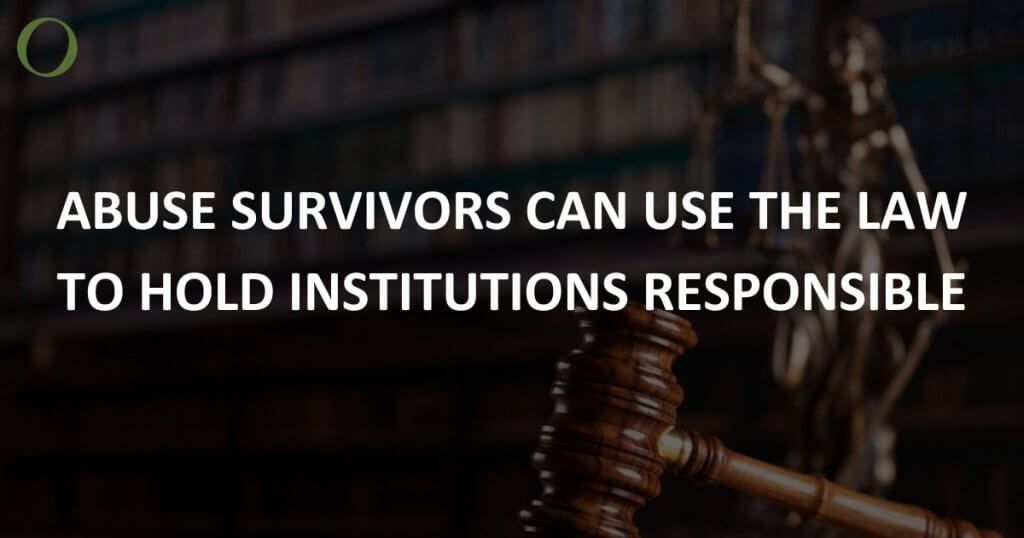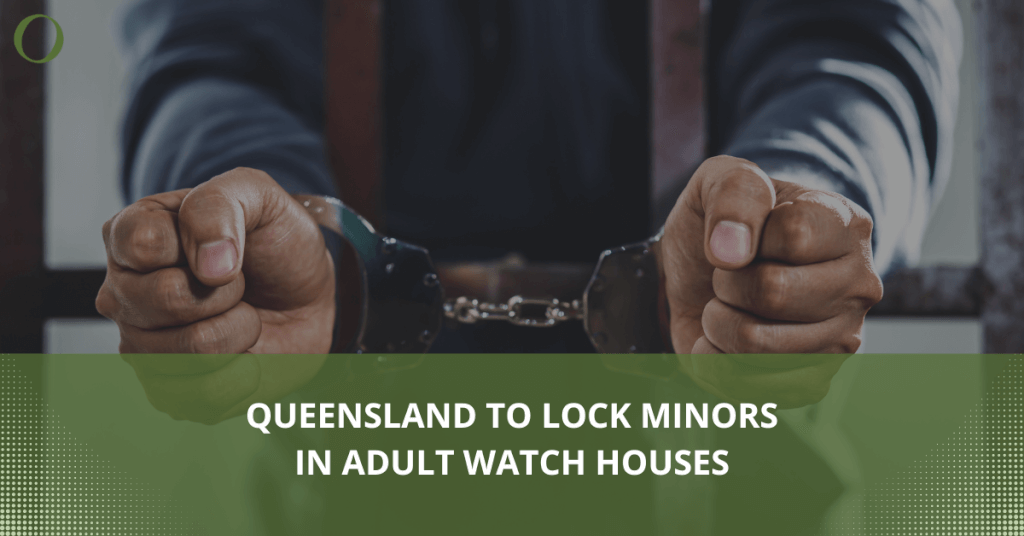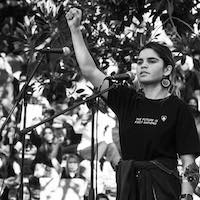 Historical abuse emerged as a significant social issue over recent decades. However, claimants seeking compensation struggle to hold abusers accountable and receive fair compensation. Courts are reluctant to hold an organisation liable for deliberate, wrongful or criminal acts by its employees. The term for this is vicarious liability.
Historical abuse emerged as a significant social issue over recent decades. However, claimants seeking compensation struggle to hold abusers accountable and receive fair compensation. Courts are reluctant to hold an organisation liable for deliberate, wrongful or criminal acts by its employees. The term for this is vicarious liability.
This meant victims of abuse have had to seek compensation directly from their abuser. However, individual abusers come from a variety of circumstances. In historical abuse matters, there are several problems:
- abusers may be difficult to locate,
- they may die before the complainant reports the matter,
- or the abuser has negligible assets.
To overcome these hurdles, survivors attempt to hold institutions vicariously liable for abuse perpetrated by their staff. This allows plaintiffs to sue institutions for fair compensation, rather than relying on an individual to pay compensation.
What is vicarious liability?
Vicarious liability allows one person or party to be held legally responsible for someone else’s actions. It most commonly arises in matters when a claimant tries to hold an employer responsible for a loss or damage action their employee took. In the context of historical institutional abuse, recent case law sees churches and schools accountable for the actions of priests and teachers.
Vicarious liability case study: Prince Alfred College Incorporated v ADC
The decision in Prince Alfred College Incorporated v ADC [2016] HCA 37 (‘Prince Alfred College’) widened the scope of vicarious liability in historical abuse cases. The Plaintiff in Prince Alfred College suffered sexual abuse by a housemaster of his boarding school in 1962. The housemaster was an employee of the College. Subsequently he got a criminal conviction for the abuse.
The Plaintiff filed a civil suit against Prince Alfred College, arguing that the College was vicariously liable for the actions of the housemaster. The original case in the South Australian Supreme Court held that a school could not be liable for sexual assault. The reasoning: because the crime was:
‘so far from being connected to (the offender’s) proper role that it could neither be seen as being an unauthorised mode of performing an authorised act, nor in pursuit of the employer’s business, nor in any sense within the course of (the offender’s) employment’.
The High Court of Australia overturned the South Australian decision, setting down a new ‘relevant approach’ test. The Court considered decisions in Canada and the United Kingdom. It held that if an employer provides an occasion for wrongdoing, they can be vicariously liable for the actions of an employee.
An occasion is distinct from an opportunity. The court must decide whether the employer placed the employee in a special role. Some factors make this finding more likely, including:
- imbuing the employee with authority, trust, control, power,
- or most importantly, the ability to achieve intimacy with the victim.
You can think the distinction as asking whether the employee’s role makes it easier or facilities the commission of the wrongful act, namely abuse.
The Plaintiff’s claim failed as too much time passed since the abuse. However, the decision provided important principles that applied in subsequent cases.
Case study: DP v Bird (2021)
DP (a pseudonym) v Bird [2021] VSC 850 was one of the first cases to apply the decision in Prince Alfred College. The Plaintiff alleged that he suffered sexual abuse by Father Coffey, a priest within the Diocese of Ballarat, on two occasions in 1971. On both occasions, the alleged abuse occurred at DP’s home. When the incidents occurred, Coffey was the assistant Parish Priest at a church within the diocese, and a teacher at the associated school.
However, Coffey died in 2013. In DP’s civil claim, they alleged that the Diocese was vicariously liable for Coffey’s actions. DP also claimed that the Diocese was liable in negligence for their failure to exercise reasonable care in supervising Coffey.
Diocese of Ballarat claims they weren’t vicariously liable
Justice Forrest accepted that DP experienced abuse and had to determine whether the Diocese was vicariously liable. The Diocese argued that unless there was proof that Coffey was an employee at the time of the abuse, they could not be vicariously liable. Justice Forrest considered the nature of the relationship between DP and Coffey. Justice Forrest found that the Diocese was vicariously liable for Coffey’s because of:
- The relationship between the Bishop, Diocese and local Catholic community;
- The Diocese’s control over Coffey and his duties in the parish;
- Coffey’s pastoral role in the Catholic community; and
- The relationship Coffey had with DP and his family, characterised as “one of intimacy and imported trust in the authority of Christ’s representative, personified by Coffey”.
Justice Forrest was satisfied that “Coffey’s role as a priest under the direction of the diocese placed him in a position of power and intimacy vis-à-vis DP that enabled him to take advantage of DP when alone – just as he did with other boys”. DP was unable to establish that the Diocese was negligent.
This is the first Australian case where a diocese was vicariously liable for unlawful actions of a priest engaged in pastoral duties, applying the principles in Prince Alfred College. DP received $230,000 in compensation for his experience.
Case study: O’Connor v Comensoli (2022)
O’Connor v Comensoli [2022] VSC 313 is the most recent Victorian decision to apply the principles in Prince Alfred College. O’Connor suffered sexual abuse by a Catholic priest at his church, Desmond Gannon, between 1968 and 1970. O’Connor brought a claim to hold the Archdiocese vicariously liable for Hannon’s conduct.
The court first considered whether the relationship between the Archdiocese and the priests gave rise to vicarious liability. The Archdiocese argued that the relationship was not one of employment or similar enough to employment, so they could not be held liable. However Justice Keogh found that the relationship was akin to employment and attracted vicarious liability.
The court then considered whether Gannon’s role provided an occasion for the abuse. Gannon had an appointment as assistant priest at the Parish. This:
- afforded him enormous respect,
- gave him invitations to schools,
- encouraged him to develop close social connections with parishioners,
- provided private tuition to students,
- and even took boys away on camping trips.
Justice Keogh was satisfied that ‘it was only possible for Gannon to achieve intimacy with O’Connor because of his status and authority as an assistant priest’.
The Archdiocese was found liable for Gannon’s unlawful actions. O’Connor received almost $2 million in damages to pain and suffering, economic loss, and future treatment expenses.
Future Considerations
Prince Alfred College and subsequent Victorian decisions made it easier for victims to seek compensation for historical institutional abuse. Most Australian states legislated to remove the time limitation on historical abuse claims for sexual abuse or serious physical abuse which occurred while the claimant was under 18.
However, there are still many challenges to overcome. When claimant vicarious liability, the abuser must be an employee or someone who has a relationship skin to employment. This bars claims against institutions where the abuser was an independent contractor or did not have an employee relationship. Claimants must also prove that the perpetrators had a special role with power, trust, control, and an ability to achieve intimacy with the victim.
Nonetheless, Prince Alfred College and subsequent cases provide welcome assistance to overcoming barriers faced by claimants when pursuing compensation for their experience.
If you suffered at the hands of an abuser in an institutional environment, contact our civil lawyers to see if you can win compensation.





